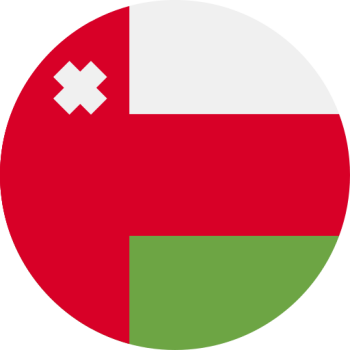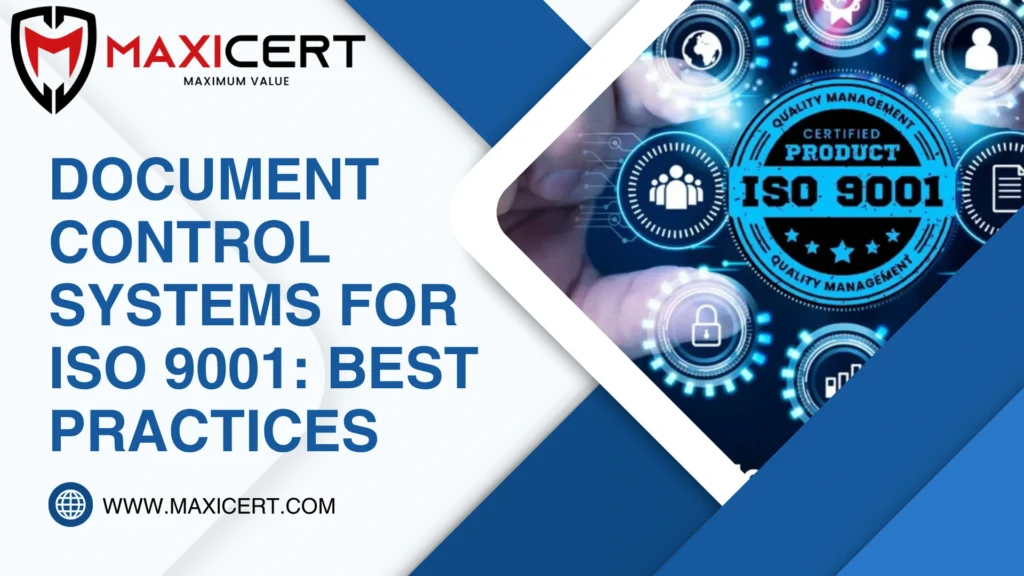Document Control Systems for ISO 9001: Best Practices
Document Control Systems for ISO 9001: Best Practices Introduction Are you still managing documents manually? Having issues with version control and missing critical approvals? Document management is one of the most vital parts of an ISO 9001 Quality Management System (QMS). For companies in Oman seeking to obtain ISO 9001 certification, a meticulously streamlined document control system is not only mandatory but also serves as a competitive edge. This blog analyzes document control compliance under ISO 9001, explains best practices, and describes how Maxicert helps businesses stay compliant and audit-ready. What is Document Control in ISO 9001? As part of the Quality Management System (QMS) of ISO 9001, document control is pivotal. It ascertains the key documents such as policies, procedures, work instructions, and records, are precise and current or properly maintained. Document control is more than a system; it encompasses the following. Types of Documents Typically Controlled: Quality policies and goals SOPs Manuals and flowchart processes. Checklists, forms, templates, and other related documents. Records on training, audits, and the corrective actions taken. Read more about ISO 9001. Request A Free Quote Your name Your email Subject Your message (optional) Key Functions of Document Control: Creation: Assigning roles, defining a structured outline, and versioning are essential aspects for document creation. Review and Approval: Each document needs a formal review and approval process prior to issuance. Distribution: All specified and relevant stakeholders, as well as Points of Use, must have access to the latest versions of documents which requires their active dissemination. Revision and Updating: Changes need to be monitored and managed in order to keep the document relevant. Retention and Storage: Maintain documents in physical or digital form and restrict access based on clear retention timelines. ISO 9001 Document Control Requirements ISO 9001:2015 addresses document control as “documented information.” Key requirements are: 1. Identification and Description All documents shall be identifiably captured (entitled, dated, authored and versioned). Must describe the purpose, scope, and the process they relate to. 2. Format and Media Organizations must determine appropriate form and media (digal, printed, video). Documents must be accessible for retrieval as well as for reading. 3. Review and Approval No documented information shall be issued until it has been reviewed and approved for its appropriateness both in context and content. Each document should only be approved and reviewed by designate personnel. 4. Control of Changes All changes must be captured and managed. A revision history or a version control system should be utilized. 5. Access and Availability Access to documents must be had to the exact location without restrictions to time. Restricted or unrestricted access should be based on roles and responsibilities defined. 6. Protection and Preservation Documents must be protected from: Loss Damage Unauthorized changes Documents must have defined procedures which manage and secure back up access. Best Practices for ISO 9001 Document Control Implement consolidated digital systems for document management. Use interfaces with other QMS applications for automated workflows and monitoring updates. Educate staff on proper document management and file protocols. Schedule regular audits and reviews of document management systems. Guarantee that backup and disaster recovery systems are operational. Why Document Control Matters in ISO 9001 Minimizes mistakes stemming from use of obsolete or repetitive documents. Improves concentration and flow of information across different sections. Provides verification and responsibility for actions. Streamlines systematic audits and compliance with ISO 9001:2015 Clause 7.5. Mitigates operational risks relating to document modification through change control and tamper-proofing measures. Makes the retrieval of documents faster and streamlines access for authorized personnel. Key Elements of an Effective Document Control System 1. Document Identification and Classification Employ unique document codes or numbers. Documents are classified according to type, department or process. 2. Review and Approval Processes Set document owners. Ensure approve and release after management review. Digital signatures should be part of the workflow approval process. 3. Version Control and Change Management Versioning and change logging should be used to track revisions. Maintain an audit trail by archiving old versions. 4. Access and Distribution Controls Define access permissions by role. Prevent unauthorized edit and deletion. Real time access to the latest versions must be granted to the right people. 5. Retention and Disposal Policy The role of document retention schedules must be set nightly. Documents that are out of date or obsolete must be disposed of securely. Who Needs ISO 9001-Compliant Document Control? Manufacturing companies. Construction and engineering firms. Healthcare organizations. Service providers and consultancies. Public sector institutions. Logistics and supply chain businesses Common Challenges in Document Control Challenge Solution Manual tracking and paper-based systems Use digital platforms for real-time updates Version confusion or outdated files Implement automated version control Unclear responsibilities for review/approval Assign clear document owners and workflows Lack of training Conduct regular training and QMS awareness ISO 9001:2015 Clause 7.5 - What It Requires Clause 7.5 defines requirements on: Information control and documentation. Tracking updates and history of changes. Legibility, retrievability, and protection of documents. Control of external documents like regulations or requirements from the client. How Maxicert Helps You with Document Control for ISO 9001 Maxicert aids with document control systems and processes to prepare for audits by offering: Digital QMS documentation templates. Customized document control workflows. Staff training and onboarding. Internal audits and gap analysis. Oman-based tailored ISO 9001 certification support. Cloud document solutions and compliance tracking. At Maxicert, we don’t only consult,we partner with you throughout your entire ISO journey. Discover our ISO certification services in the oman. Get Certified Now Conclusion Document control is not merely a checkbox for ISO 9001 compliance; it underpins a robust and efficient QMS. For both startups and established companies in Oman, effective document management is vital for quality assurance and sustainable success. You get more than just document tools with Maxicert. You receive a strategic partner that aids your business in achieving enduring success with ISO 9001 and expertly navigates Oman’s regulatory landscape. Looking to optimize your ISO 9001 document control? Reach out to Maxicert’s specialists today to book a no-cost assessment of your document control readiness. Secure your FREE consultation with Maxicert today. Get In Touch +966
Document Control Systems for ISO 9001: Best Practices Read More »







